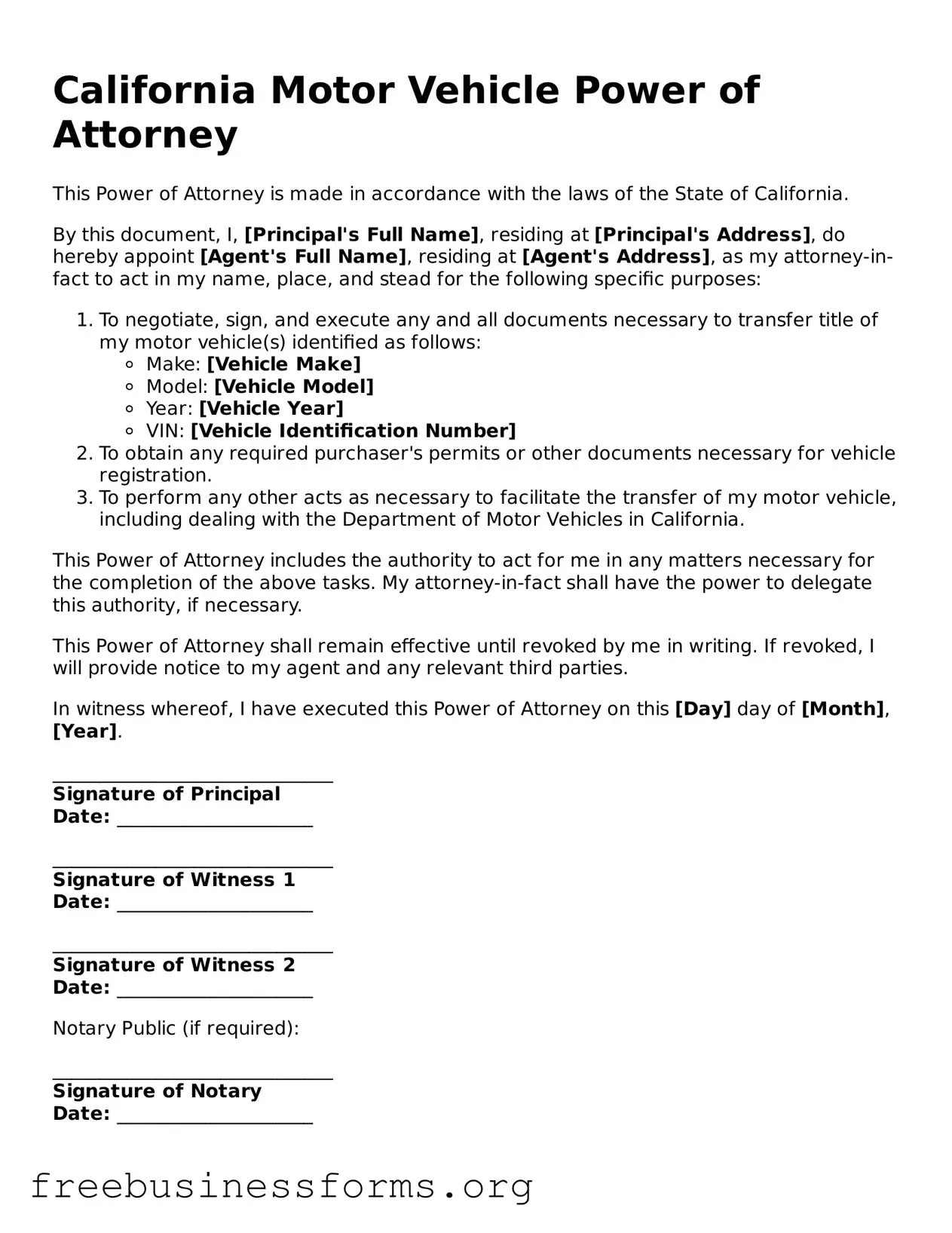California Motor Vehicle Power of Attorney
This Power of Attorney is made in accordance with the laws of the State of California.
By this document, I, [Principal's Full Name], residing at [Principal's Address], do hereby appoint [Agent's Full Name], residing at [Agent's Address], as my attorney-in-fact to act in my name, place, and stead for the following specific purposes:
- To negotiate, sign, and execute any and all documents necessary to transfer title of my motor vehicle(s) identified as follows:
- Make: [Vehicle Make]
- Model: [Vehicle Model]
- Year: [Vehicle Year]
- VIN: [Vehicle Identification Number]
- To obtain any required purchaser's permits or other documents necessary for vehicle registration.
- To perform any other acts as necessary to facilitate the transfer of my motor vehicle, including dealing with the Department of Motor Vehicles in California.
This Power of Attorney includes the authority to act for me in any matters necessary for the completion of the above tasks. My attorney-in-fact shall have the power to delegate this authority, if necessary.
This Power of Attorney shall remain effective until revoked by me in writing. If revoked, I will provide notice to my agent and any relevant third parties.
In witness whereof, I have executed this Power of Attorney on this [Day] day of [Month], [Year].
______________________________
Signature of Principal
Date: _____________________
______________________________
Signature of Witness 1
Date: _____________________
______________________________
Signature of Witness 2
Date: _____________________
Notary Public (if required):
______________________________
Signature of Notary
Date: _____________________
